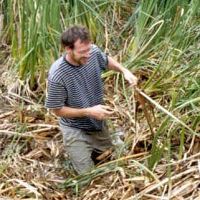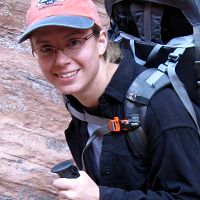Goulden et al., 2011
How Likely Is a Large Terrestrial Feedback to Climate Change?
M. Goulden; G. Winston; S. Parker; A.E. Kelly; A.W. Fellows, (2011)
Conference presentation, AGU Abstract B23E-02
-
Sierra, INVESTIGATOR
-
Sierra, GRAD STUDENT
-
Reynolds, Sierra, INVESTIGATOR, COLLABORATOR
Abstract
Terrestrial feedbacks associated with changes in land-atmosphere exchange may amplify or dampen regional and global climate change. The importance of a feedback is determined by the probability an ecosystem will change in response to altered climate, and the effect of that ecosystem change on land- atmosphere exchange. We are using water manipulations and observations across elevation and climate gradients in California, including ten micrometeorological towers, to better understand the sensitivity of land- atmosphere exchange to climate. Findings include: (1) The relative importance of the existing species within a plant community shifts rapidly in response to altered water input. An example of this process, which is referred to as species reordering, occurs when one grass becomes more abundant while other grasses decline. (2) Species reordering causes only modest changes in land-atmosphere carbon and energy exchange. (3) Larger shifts in land-atmosphere exchange appear likely with changes in dominant plant functional type. An example of this process, which is referred to as a biome shift, occurs when a forest replaces a grassland. (4) Biome shifts appear slower and less frequent than species reordering. The more rapid changes in ecosystems (species reordering) appear to have modest effects on land-atmosphere exchange. And the changes in ecosystem function that have larger effects on land-atmosphere exchange (biome shifts) appear infrequent. The overall effect may decrease the likelihood of a large terrestrial feedback to climate change.
Citation
M. Goulden; G. Winston; S. Parker; A.E. Kelly; A.W. Fellows, (2011): How Likely Is a Large Terrestrial Feedback to Climate Change?. Conference presentation, AGU Abstract B23E-02.
 This Paper/Book acknowledges NSF CZO grant support.
This Paper/Book acknowledges NSF CZO grant support.
Explore Further


